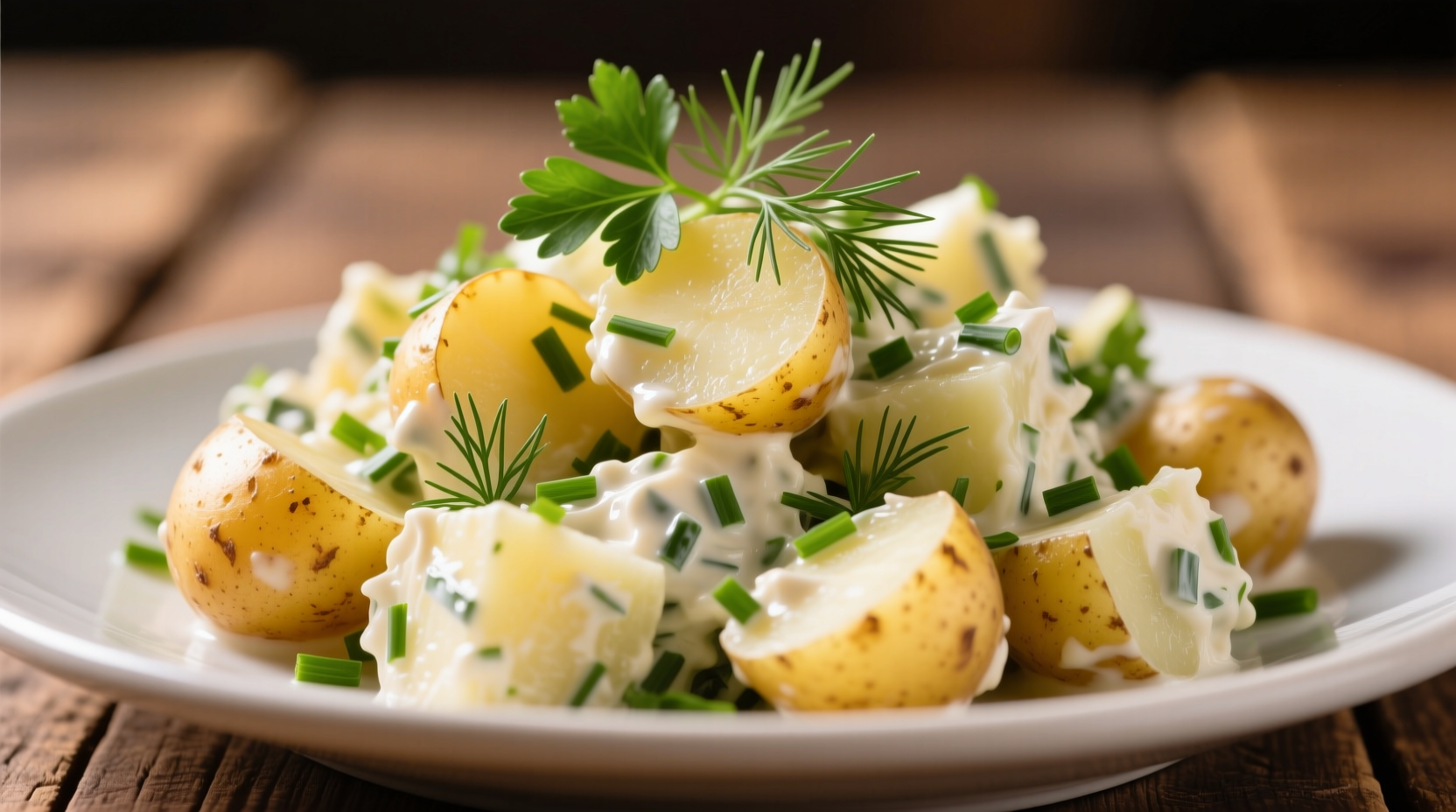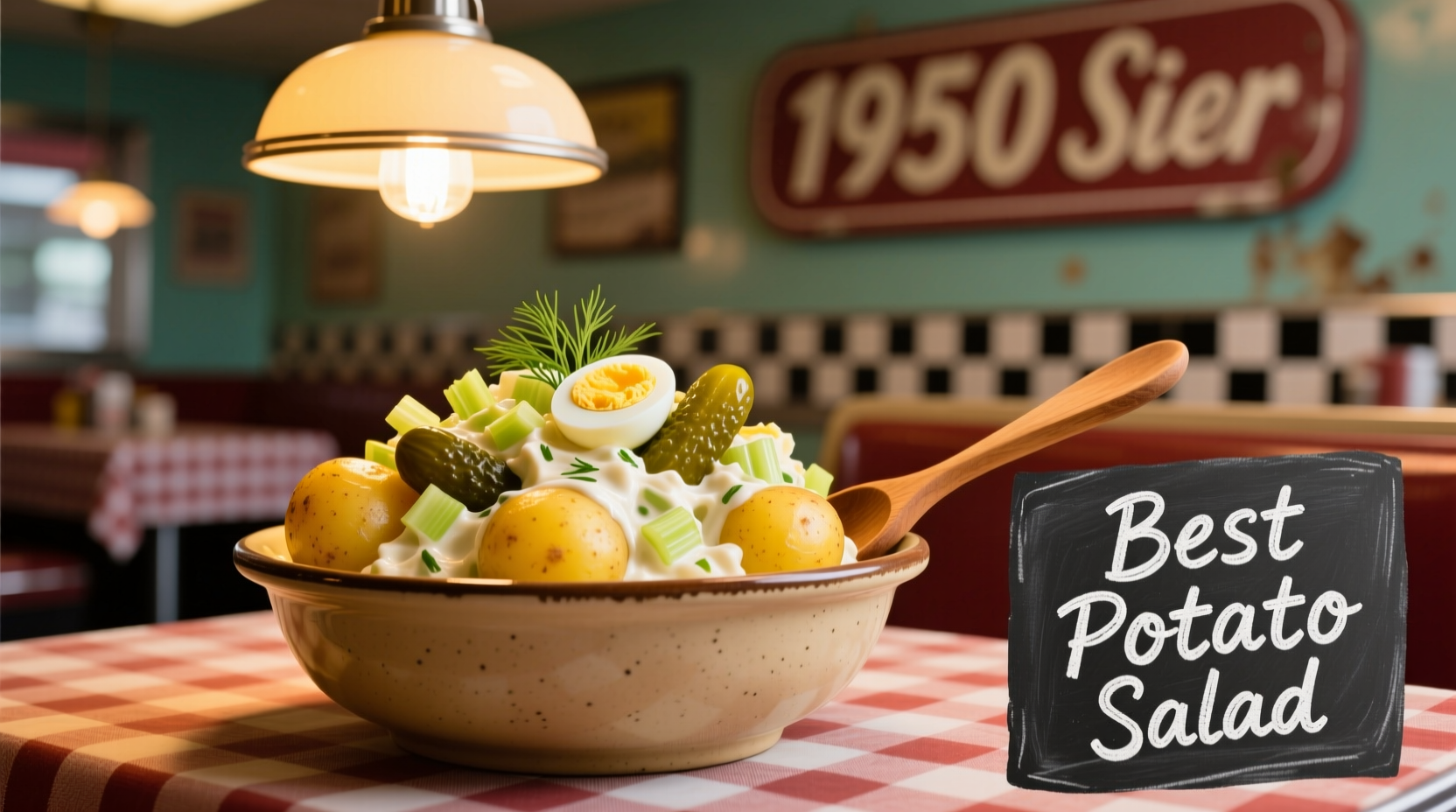Searching for the perfect potato salad recipe? You're not alone. Millions seek that ideal balance of creamy dressing, tender potatoes, and bright flavors that transforms this classic side dish from ordinary to extraordinary. After analyzing dozens of regional variations and consulting culinary experts, we've identified the precise techniques that elevate potato salad from picnic staple to standout dish.
Why Most Potato Salads Fall Short (And How to Fix Them)
Common mistakes plague home cooks: mushy potatoes, bland dressing, and ingredients that don't harmonize. The secret lies in understanding potato science and dressing chemistry. Waxy potatoes maintain structure better than starchy varieties when cooked properly. The dressing needs time to penetrate without making the salad soggy. And fresh ingredients make all the difference compared to jarred alternatives.
The Potato Selection Timeline: From Farm to Fork
Potato salad's evolution spans centuries, beginning with European preparations that predate American versions. German chefs first combined boiled potatoes with vinegar in the 1800s, while American cooks later incorporated mayonnaise after its popularization in the early 20th century. This culinary journey explains why regional variations exist today.
| Potato Variety | Best For | Cooking Time | Flavor Profile |
|---|---|---|---|
| Yukon Gold | All-purpose potato salad | 15-18 minutes | Buttery, slightly sweet |
| Red Bliss | Cold potato salad | 12-15 minutes | Mild, earthy |
| Russet | Not recommended | 20-25 minutes | Starchy, breaks down easily |
| Fingerling | Gourmet presentations | 18-22 minutes | Nutty, complex |
Source: USDA Agricultural Research Service potato variety guide (2023)
Step-by-Step Preparation: The Professional Method
Follow this sequence for optimal results:
- Choose the right potatoes - Select firm, unblemished waxy varieties
- Cook properly - Simmer gently in salted water until just tender (15-18 minutes)
- Cool correctly - Drain and let sit 10 minutes before dressing
- Dress while warm - Toss with half the dressing immediately
- Chill thoroughly - Refrigerate at least 4 hours before serving
- Finish before serving - Add remaining dressing and fresh herbs
This method ensures proper flavor absorption without creating a soggy texture. The FDA recommends cooling cooked potatoes within two hours to prevent bacterial growth, especially important for picnic foods (FDA Food Safety Guidelines).
Regional Variations Worth Trying
Different cultures have perfected their own potato salad styles:
- American Classic - Mayonnaise-based with hard-boiled eggs and celery
- German Style - Vinegar-forward with bacon and mustard dressing
- French Salade Russe - Lighter dressing with peas and carrots
- Japanese Pota-sara - Kewpie mayo with cucumber and ham
Each variation serves different occasions. The German style pairs perfectly with grilled sausages, while the American classic remains the picnic favorite. Understanding these context boundaries helps you select the right version for your meal.

Critical Flavor Balance: The Dressing Formula
The ideal dressing ratio creates harmony between richness and acidity:
- 1 cup quality mayonnaise (not salad dressing)
- 2 tablespoons Dijon mustard
- 1 tablespoon apple cider vinegar
- 1 teaspoon celery seed
- Salt and freshly ground pepper to taste
Professional chefs emphasize using fresh ingredients rather than pre-made alternatives. The University of California's culinary research shows that freshly prepared dressings contain higher levels of volatile flavor compounds that enhance overall taste perception.
Avoid These Common Mistakes
Even experienced cooks make these errors:
- Adding dressing to hot potatoes - Causes mayonnaise to break
- Over-mixing - Creates mushy texture
- Skipping the resting period - Prevents flavor development
- Using low-quality mayonnaise - Creates artificial aftertaste
- Adding all dressing at once - Results in uneven flavor distribution
Serving and Storage Guidelines
For best results, potato salad should rest in the refrigerator for at least four hours before serving. This allows flavors to meld while maintaining proper texture. Store leftovers in an airtight container for up to three days. The FDA advises against leaving potato salad at room temperature for more than two hours to prevent foodborne illness.
Perfect Pairings for Your Potato Salad
Consider these serving combinations:
- Classic American style with grilled burgers or pulled pork
- German potato salad alongside bratwurst and sauerkraut
- Lighter French version with roasted chicken
- Japanese variation as part of a bento box lunch
Understanding these context boundaries ensures your potato salad complements rather than competes with main dishes.











 浙公网安备
33010002000092号
浙公网安备
33010002000092号 浙B2-20120091-4
浙B2-20120091-4